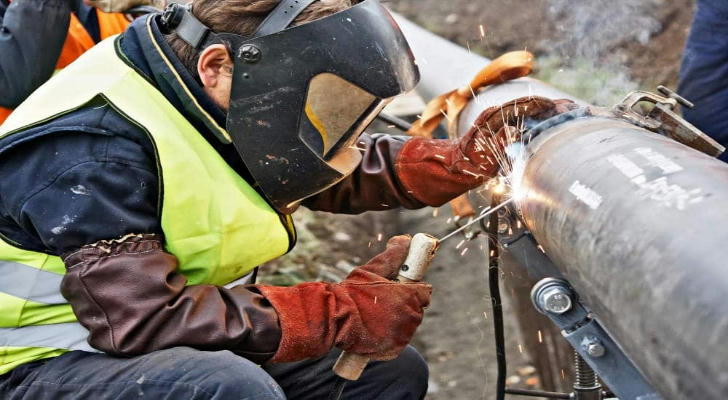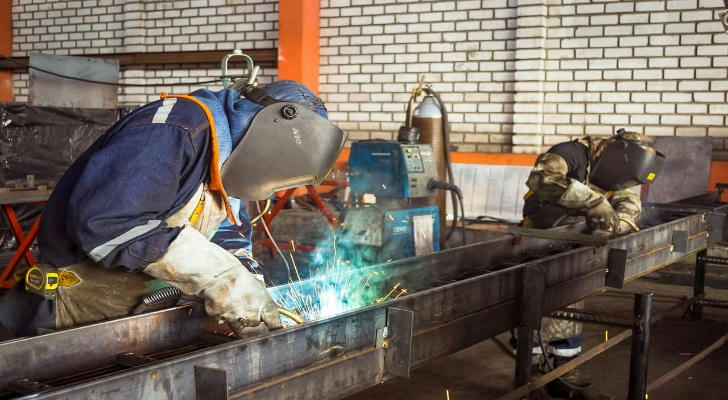The Welder’s Secret Weapon: Unlocking the Art of Perfect Welds
Welding isn’t just about melting metal—it’s about creating bridges, shaping industries, and powering innovation. Whether you’re a beginner eager to learn, a seasoned welder sharpening your craft, or an expert exploring cutting-edge techniques, welding offers endless opportunities to grow and earn.

From structural frameworks to artistic sculptures, every perfect weld tells a story. Here’s how to advance your welding journey, with expert tips, actionable steps, and real-world insights.
Welding: A Cornerstone of Modern Industry
Welding supports critical industries:
🏗 Construction: Skyscrapers, bridges, and infrastructure.
🚢 Shipbuilding: Naval and commercial fleets.
🛠 Manufacturing: Cars, appliances, and equipment.
🌌 Aerospace: Satellites, aircraft, and rockets.
According to the American Welding Society (AWS), the U.S. will need 375,000 new welders by 2026 to meet demand. Projects like the $3 billion Brent Spence Bridge upgrade underscore how vital welders are to national development.

Skill-Building for Every Level
1. For Beginners: Building a Strong Foundation
Learning the basics of welding involves mastering simple techniques like MIG (Metal Inert Gas) welding and safety protocols.
💡 Practical Steps:
Enroll in community college or vocational school programs certified by AWS.
Start with basic welding positions (flat, horizontal) and materials like steel.
Prioritize safety training: invest in auto-darkening helmets, gloves, and boots.
| Key Tools for Beginners | Purpose |
|---|---|
| MIG Welding Machines | Easy to use, versatile for projects |
| Wire Feeders | Consistent welding quality |
| Protective Gear | Ensures safety and comfort |
🌟 Real Story: Maria Perez from Denver started with a 12-week vocational program. She launched a custom furniture business after mastering basic joint preparation and weld bead application.
2. For Intermediate Welders: Leveling Up
Intermediate welders move into specialized techniques, like TIG welding for precision tasks or FCAW for heavy construction.
💡 Practical Steps:
Pursue certifications like AWS’s Certified Welding Inspector (CWI).
Learn blueprint reading and material science to work on diverse projects.
Explore hands-on experience in industries like automotive or shipbuilding.
| Skills to Develop | Industry Examples |
|---|---|
| TIG Welding | Aerospace, medical devices |
| Structural Welding | Bridges, skyscrapers |
| Advanced Blueprinting | Shipbuilding, manufacturing |
🌟 Real Story: Jason Smith transitioned from automotive to shipbuilding after earning a structural welding certificate. His expertise in aluminum welding helped him land projects with the U.S. Navy.
3. For Experts: Innovating and Teaching
Veteran welders can diversify into high-tech sectors, such as robotics or exotic metal welding. They can also mentor the next generation of welders.
💡 Practical Steps:
Gain advanced certifications, such as in ultrasonic testing or underwater welding.
Network through industry organizations like AWS or SkillsUSA.
Use emerging tools, like VR simulators, to refine and share expertise.
🌟 Real Story: Sarah Lee, an expert TIG welder, pivoted to aerospace welding. She later adopted VR training to prepare apprentices for intricate satellite projects.
Earning While Learning: Real-World Apprenticeships
Combining classroom learning with hands-on work, apprenticeships are perfect for welders seeking practical experience.
| Program Example | Benefits |
|---|---|
| Department of Labor Apprenticeships | Earn while you learn, career placement support |
| Local Trade Schools | Flexible schedules, regional focus |
| AWS Programs | National recognition, certifications |
🌟 Real Story: Michael Johnson joined an automotive manufacturing apprenticeship in Ohio. By day, he welded EV components; by night, he studied robotics, paving his way to automation roles.

Tools of the Trade: The Welder’s Arsenal
Every welder’s success depends on using the right tools:
MIG Welders: Perfect for quick, versatile projects.
TIG Welders: Best for precision work like aerospace welding.
Plasma Cutters: Essential for cutting through thick metals efficiently.
Portable Welders: Ideal for on-site repairs, such as pipelines or farm equipment.
Welding Simulators: VR tools like Soldamatic help perfect skills virtually.
🔧 Did You Know? The first commercial MIG welder was introduced in the 1940s and revolutionized industrial welding with its speed and ease of use.
Case Study: Welding in Action
Project: U.S. Navy Shipbuilding
Task: Weld lightweight aluminum hulls for destroyers.
Challenges: Avoiding distortion while maintaining strength.
Solution: Welders used preheating techniques and TIG welders to achieve seamless joints.
Result: Reduced build time by 20%, boosting efficiency across the fleet.
Resources to Elevate Your Career
| Resource | Purpose |
|---|---|
| AWS Online Library | Access certifications and guides. |
| Lincoln Electric School | Hands-on, immersive training. |
| SkillsUSA Competitions | Showcase and refine welding skills. |
| Local Unions | Regional support and job placement. |
| VR Simulators | Safe, cost-effective skill practice. |
The Future of Welding: Your Time to Shine
Welding is constantly evolving with new technologies, like robotic welding systems and underwater techniques. From Maria’s custom furniture to Jason’s naval shipbuilding, the opportunities in welding are limitless.
The question is: are you ready to shape the world one weld at a time?
